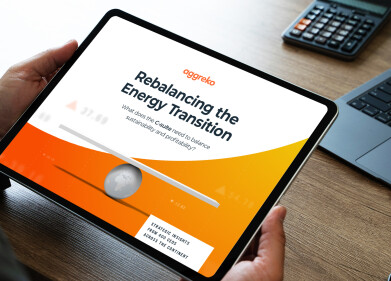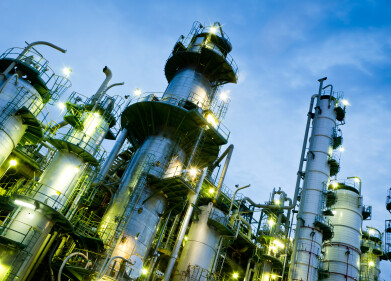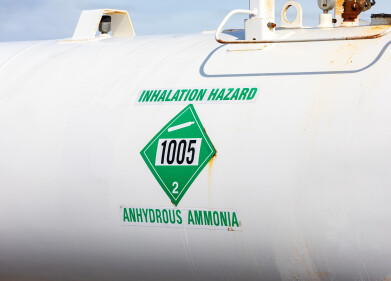Fuel for thought
Can Plastic Recycling Get the Petrochemical Industry to Carbon-Neutrality?
Dec 10 2021
Recently, ILM Exhibitions hosted PEFTEC 2021, a two-day conference for the petrochemical industry. The first day concluded with a roundtable discussion hosted by Dr. Christopher Rüger from the University of Rostock on carbon-neutrality, petrochemistry and the role of recycling plastics, which touched on a number of critical problems for the long-term sustainability of the industry.
Jules Magain, who works on the chemical recycling of plastics as a senior member in the research division of TotalEnergies, gave the first presentation. Mr. Magain emphasised TotalEnergies’ changing portfolio, with further investment in transitional fuels (i.e. energy-sources which emit less carbon dioxide than oil or coal but not none) like natural gas and renewable energies, including electricity and hydrogen. The French multinational’s remaining attachment to oil is being re-thought, too, notes Mr. Magain, in terms of producing more recyclable plastics. Indeed, TotalEnergies is betting on the circular economy in its plans for carbon-neutrality in all three scopes by 2050. Mr. Magain explained TotalEnergies’ ambitions to begin building France’s first chemical recycling plant in 2023 and to achieve a market-share of 10% in the production of PLA, for which a second plant is currently under-construction that is expected to increase the company’s annual output to 200,000 tons.
Dr. Volodymyr Polchyk delivered the next introduction on behalf of Fraunhofer-Gesellschaft, Europe’s largest application-oriented research organisation. Dr. Palchyk gave a stimulating overview of Fraunhofer-Gesellschaft’s investigations into the chemical recycling of plastics and its industry applications. Of primary interest, says Dr. Palchyk, is the use of chemical methods to pick up the slack for mechanical recycling, which remains the most commercially-viable means of plastic recycling, as chemical recycling can handle materials, like contaminated plastic in homogenous mixes and composites, that currently confound mechanical processes. Fraunhofer-Gesellschaft have already completed pilot-scale projects in this field, including techniques for successfully recycling face-masks and extracting high-quality polystyrene from composite materials.
From the picturesque headquarters of BASF in Ludwigschafen, Dr. Lars Meyer introduced the chemical giant’s plans to double its sales of circular products to €17 billon by 2030 and to be annually consuming 250,000 tons of recycled feedstock in its operations by 2025. Such commitments are just two aspects of the German multinational’s Circular Economy Program, which also includes research and development into bio-based feedstock and new green technologies.
For SABIC, the world’s largest brand-value chemical producer with particular market-share in polyethylene, polyolefins and polypropylene, Dr. Maria Soliman gives the fourth talk. SABIC’s commitment to carbon-neutrality by 2050, states Dr. Soliman, involves both the electrification of large assets and investment in the circular economy. The difficult topic of collaboration in the circular economy is raised, emphasising the importance not only of sharing techniques but of ensuring that recyclability is foregrounded in industries both upstream and downstream from SABIC.
Finally, Dr. Matthijs Ruitenbeek, a senior scientist at Dow Inc.. As the representative himself notes, the iconic American firm’s plan for carbon-neutrality largely echoes the other companies represented at the roundtable. As such, Dr. Ruitenbeek discusses a few under-explored problems and road-bumps for the industry. For instance, citing estimates for the future carbon-neutrality of petrochemical feedstocks by McKinsey & Company, Dr. Ruitenbeek discusses possible alternative sources of virgin feedstock, like biomass, waste and captured CO2 – much to the surprise of a number in the audience, actually. Venturing beyond the technical dimension for a moment, Dr. Ruitenbeek also highlighted legislative obstacles and aids, the difficulty of encouraging stakeholders with necessarily imperfect solutions and the perpetual challenges arising from the need to “Renovate the shop while the shop is still open.”
In the open discussion, a number of other important issues were raised. Mr. Magain, from TotalEnergies, and Dr. Meyer, from BASF, both emphasised the difficulties posed to chemical recycling by the variability, in quality and composition, of plastics. For instance, in plants using pyrolysis, the quality of the oil which results from the recycling process becomes highly unpredictable. As such, further coordination with upstream partners and regulatory bodies must be established to reduce this variability, promoting recyclability as an essential capability of all plastics.
In another surprising twist to proceedings, the panel explored how recycled pyrolysis oil continues to be resistant to comprehensive analysis. “Typically, if you don’t look for it, you don’t see it,” notes Dr. Matthijs Ruitenbeek, highlighting the risks, both in terms of safety and commercial viability, posed by this uncertainty. Although Fraunhofer-Gesellschaft, in particular, are in the midst of developing the appropriate instrumentation, most of the industry is still saddled with technology and methods best suited to the analysis of fossil fuels. Administratively, the picture is almost a duplicate – most specifications still refer only to fossil fuels. Many audience members were highly concerned with this regulatory deficiency, asking the representatives about the progress of efforts to establish criteria.
Members of the petrochemical industry in the audience were keen to know about the theoretical recycling percentages of plastics. Briefly, Dr. Ruitenbeek discussed contemporary research out of Wageningen University, which estimates a net recycling rate of plastics of 72%. Other speakers were eager to suggest, however, that the petrochemical industry has a long way to go before discussions of such limits gain any urgency. “We’re only at 10%, right now,” underlines Dr. Maria Soliman, “It’s ridiculous.” Another section of the audience voiced their concerns about the pollutants that might result from pyrolytic plastic recycling, noting that the pyrolysis of halogenated compounds may produce dioxins, which are persistent organic pollutants. Indeed, the accumulation of such toxins over time might lower the theoretical recycling percentage of plastic.
If you would like to watch the complete recording of this discussion, register here, if you haven’t already, and click on through to the ‘On Demand Video’ tab – the panel discussion is entitled Plastic Recycling and Petrochemistry Challenges.
Digital Edition
PIN 25.6 Buyers' Guide
January 2025
Buyers' Guide Directory - Product Listings by Category - Suppliers Listings (A-Z) Articles Analytical Instrumentation - ASTM D7042: The Quantum Leap in Viscosity Testing Technology -...
View all digital editions
Events
Jan 20 2025 San Diego, CA, USA
Jan 22 2025 Tokyo, Japan
Jan 25 2025 San Diego, CA, USA
SPE Hydraulic Fracturing Technology Conference and Exhibition
Feb 04 2025 The Woodlands, TX, USA
Feb 05 2025 Guangzhou, China



















